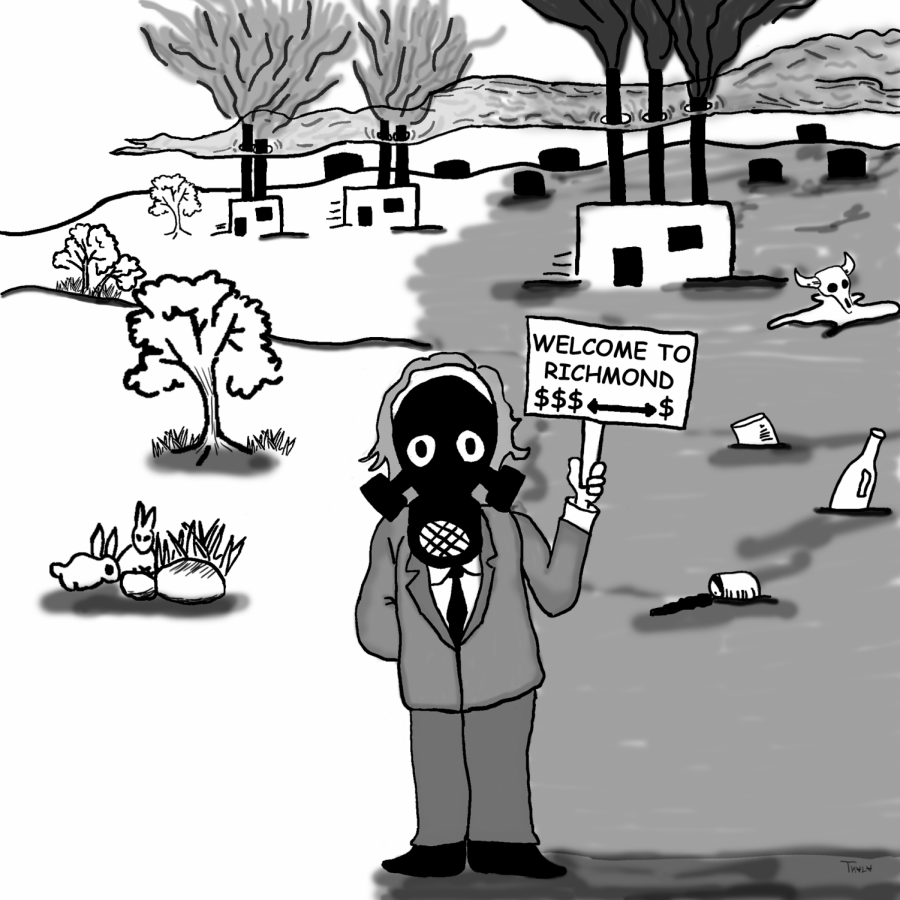Editorial: Toxic relationship
Chevron Refinery pollution flames community doubts
Mar 13, 2019
In the predawn hours of March 6, the Chevron Refinery in Richmond issued a warning to local residents about potential flaring in a processing unit caused by a power outage.
The alert and subsequent statement issued shortly after 6 a.m. on Chevron’s Facebook page explained the flaring to be Level 1 and of little to no risk outside of the refinery.
They actually reported a gaseous emission did not travel beyond a cyclone fence.
A Level 1 is one of the lowest on the Community Warning System scale and indicates that no offsite environmental or public health impacts are anticipated, according to a Community Warning System.
Despite real-time emission information for Richmond being made publicly available on fenceline.org, area residents are seemingly more comfortable being spoon-fed public relations statements from the company’s social media sites.
The real-time Richmond community air monitoring program lists individual chemicals like Benzene, Hydrogen Sulfide and Sulfur Dioxide among others that are constantly seeping into our air and eventually — our bloodstream.
Alarmingly, despite current measurements being reported, the most recent record for refinery incidents in Richmond is from January 2017.
Lately, because of problems we face as individuals and the 24-hour cycle of negative news we face as a collective, many of lose sight of the most important resource that we all share, our air.
Earlier this month, the Union of Concerned Scientists released a report highlighting the dangers of air pollution in the lives and lungs of black and Latino people.
The report shows Latinos and African-Americans breathe about 40 percent more pollution than white people do in California.
On its face, this information may seem laughable as many mixed-race communities exist across the state with none requiring segregated breathing fountains for white and brown residents.
Specifically, black and Latino Californians are exposed to about 40 percent finer particulate matter (PM2.5) from cars, trucks and buses.
Among all air pollutants, PM2.5 has the biggest impact on human health.
More importantly, the higher risk from vehicle pollution means the emissions from refinery flare-ups does more damage to people than official statistics actually address.
Because some communities are at a higher risk of suffering complications from pollution, intermittent refinery seepage is just piling on. Something has to change.
Historically, when monumental change is needed, students have the passion to jump start a movement. That time is nearing.
But because of a lack of public resources to ensure public information is made available, would-be student activists would have insufficient facts.
In short, densely populated areas, commonly populated by minorities, are being slowly strangled by auto pollution. As that happens Chevron assures Richmond residents that no breath of virgin air in the city is undeniably fresh.
If demands for factual, up-to-date information aren’t levied by student activists, the future will be the same color as our lungs — black.


